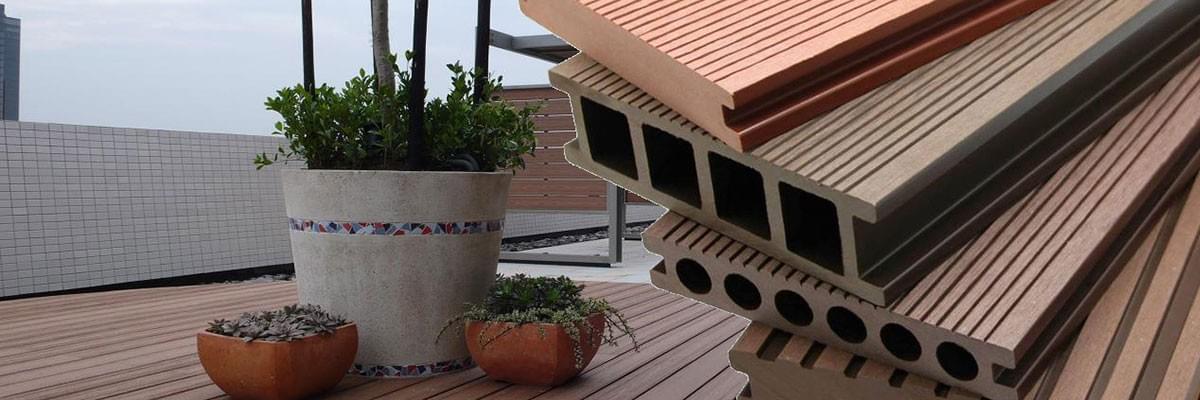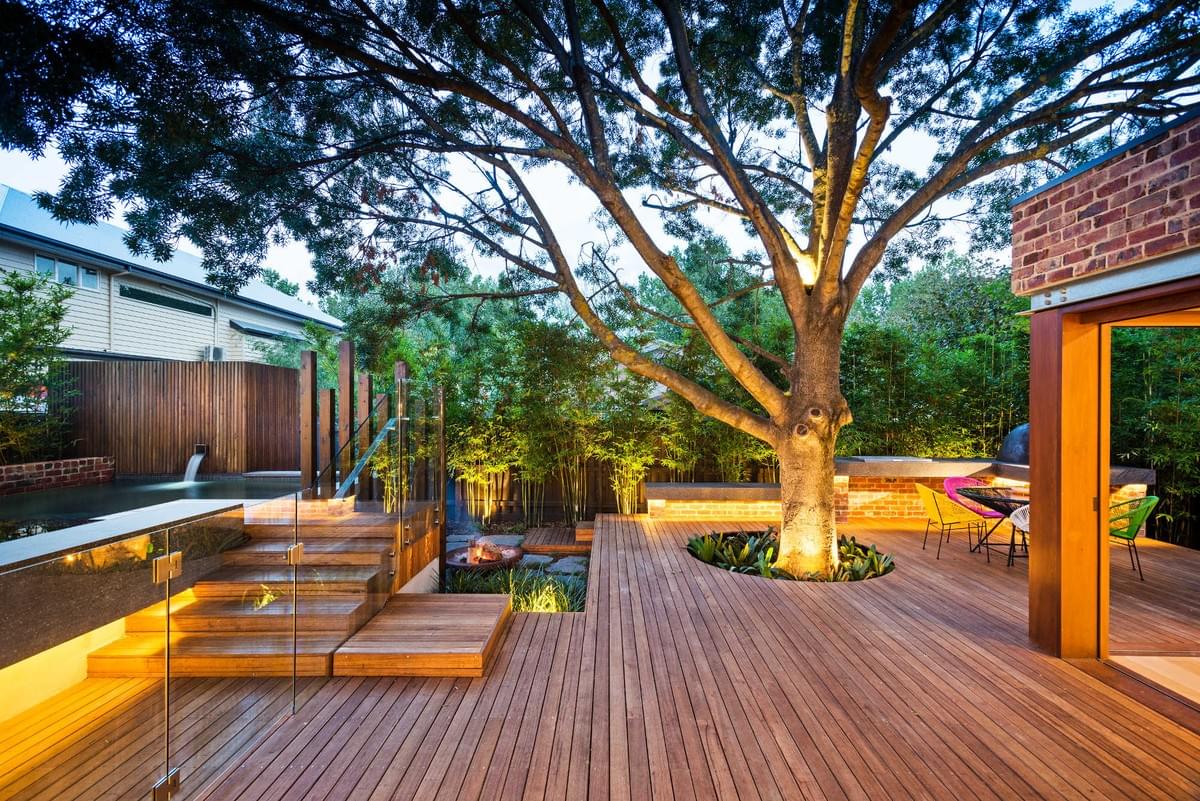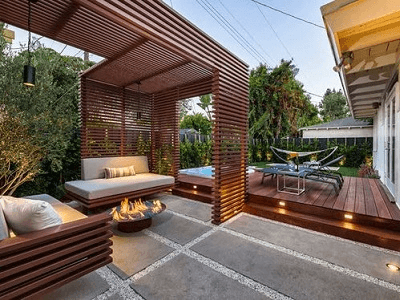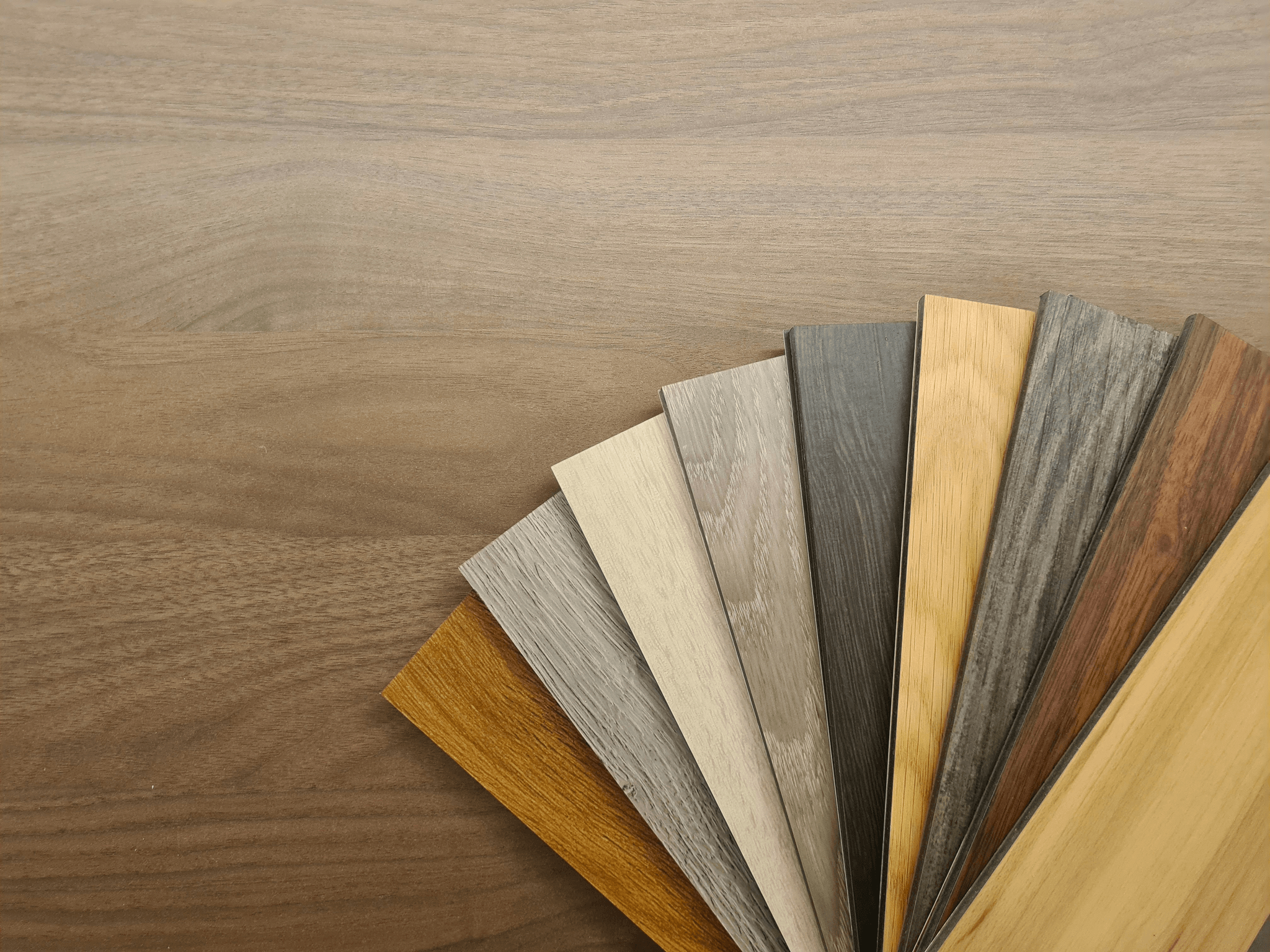Introduction
With so many options available, from traditional wood to modern alternatives, homeowners are often left scratching their heads. This guide will delve into the nuances of composite decking, a rising star in the world of outdoor living spaces.
Understanding Decking Material Choices
Decking material choices can significantly impact both aesthetics and functionality of your outdoor area. Solid composite boards and hollow composite options each offer unique benefits that cater to different needs and preferences. As you navigate through these choices, it's essential to consider factors like durability, maintenance requirements, and overall cost—especially when evaluating trex decking cost.
The Rise of Composite Decking
In recent years, composite wood has surged in popularity among homeowners looking for sustainable and low-maintenance solutions. Unlike traditional wood decks that require constant upkeep, composite decking provides a resilient alternative that stands up to weather and wear without compromising on style. With innovations in design and materials like PVC decking entering the mix, it’s no wonder that deck composite decking is becoming a favored choice.
Hollow vs Solid: What’s the Difference?
When comparing hollow versus solid composite boards, understanding their differences is key to making an informed decision. Solid composite boards typically offer superior strength and longevity compared to their hollow counterparts, which may be more susceptible to wear over time. However, hollow options can be lighter and sometimes more budget-friendly—making it essential for homeowners to weigh these factors against their specific needs.
Overview of Composite Decking Options

What Are Solid Composite Boards?
Solid composite boards are a popular choice in the world of composite wood decking due to their durability and strength. Made from a mix of recycled wood fibers and plastic, these boards provide a sturdy surface that resists warping and cracking over time. Their solid construction not only enhances their longevity but also contributes to a more traditional wood-like appearance that many homeowners love.
One of the standout features of solid composite boards is their ability to withstand harsh weather conditions without losing their structural integrity. Unlike natural wood, which can splinter or rot, these boards maintain their form while requiring minimal maintenance. Additionally, they come in various colors and finishes, allowing you to choose options that complement your home’s aesthetic perfectly.
Investing in solid composite boards may initially seem pricier than other materials; however, when you factor in long-term savings on repairs and maintenance—especially when considering Trex decking cost—the value becomes clear. Homeowners often find that the durability and ease of upkeep make solid composite an economical choice over time.
Exploring Hollow Composite Decking
Hollow composite decking offers an alternative approach for those seeking lightweight yet durable options for their outdoor spaces. These boards feature a tubular design that reduces material usage while still providing adequate strength for everyday use. This unique structure makes hollow options particularly appealing for DIY enthusiasts who appreciate ease of handling during installation.
While hollow composite decking can be less expensive than its solid counterparts, it does come with some vulnerabilities worth noting. The internal cavities may be more susceptible to moisture absorption if not properly sealed or maintained—leading to potential issues like warping or mold growth over time. Therefore, careful consideration is necessary when selecting this type of deck composite decking.
Despite these concerns, hollow composites have gained popularity due to their affordability and variety of styles available on the market today. Homeowners can find numerous color choices and designs that mimic natural wood without the hefty price tag typically associated with solid alternatives. Ultimately, whether you choose hollow or solid options will depend on your individual needs regarding budget and performance expectations.
The Popularity of PVC Decking
PVC decking has surged in popularity as another contender within the realm of composite wood options—offering unique advantages distinct from both solid and hollow composites. Made entirely from polyvinyl chloride (PVC), this type of decking boasts impressive resistance against moisture damage while requiring virtually no maintenance beyond occasional cleaning with soap and water.
One key selling point for PVC decking is its exceptional color retention; unlike traditional wood or even some composites which may fade over time under UV exposure, PVC maintains its vibrant hues year after year without needing refinishing treatments! This makes it an attractive choice for homeowners looking to keep their outdoor spaces looking fresh with minimal effort involved.
Moreover, PVC decks are also environmentally friendly since they’re often manufactured using recycled materials—making them a sustainable option among modern building practices today! This growing awareness about eco-conscious choices has contributed significantly towards increasing interest in PVC alongside other popular materials like solid composite boards within contemporary landscaping projects across homes nationwide.
Durability: Solid vs Hollow

Homeowners often find themselves weighing the long-term benefits of solid composite boards against the potential vulnerabilities of hollow options. Understanding these differences is crucial for making an informed decision about your decking material.
Strength of Solid Composite Boards
Solid composite boards are renowned for their robust strength and resilience, making them a popular choice among homeowners looking for longevity in their decks. These sturdy boards can withstand heavy foot traffic, harsh weather conditions, and even the occasional mishap—think dropped grill tools or enthusiastic kids running around. With solid composite wood decking boards, you’re investing in a product that promises durability, ensuring your deck remains intact and beautiful for years to come.
Moreover, solid composite decking is less prone to warping or cracking over time compared to its hollow counterparts. This inherent strength means fewer repairs and replacements down the line, ultimately saving you money on maintenance costs—especially when considering factors like Trex decking cost versus other options. If you're after a deck that will stand strong through sun and storm alike, solid composite boards should top your list.
Vulnerabilities in Hollow Composite Options
On the flip side, hollow composite options might seem appealing due to their lighter weight and often lower price point; however, they come with vulnerabilities that can lead to significant issues over time. The design of hollow composite decking makes it more susceptible to moisture accumulation within its cavities, which can result in mold growth or structural weakening if not properly maintained. Additionally, these boards may not handle heavy loads as effectively as solid alternatives—think twice before hosting those epic summer barbecues!
Another consideration is that while hollow composites might initially look great on installation day, they can suffer from fading or discoloration faster than solid options due to their exposed surfaces being more prone to UV damage. This means that over time you may find yourself dealing with an unsightly deck rather than one that enhances your outdoor aesthetic appeal. If you're leaning towards hollow composite wood for budget reasons alone, be prepared for potential compromises down the road.
Long-term Performance Considerations
When evaluating long-term performance between solid and hollow composite decking materials, it's essential to consider how each option will hold up over time under various conditions. Solid composite boards typically offer better resistance against environmental stressors such as moisture and temperature fluctuations; this translates into fewer repairs or replacements needed throughout their lifespan—making them a wise investment despite higher upfront costs like Trex decking cost comparisons suggest.
In contrast, while some manufacturers promote advancements in hollow composites claiming improved durability features, many homeowners report mixed experiences regarding longevity and maintenance requirements associated with these products. Therefore it’s crucial to read reviews and conduct thorough research before jumping into a purchase decision based solely on initial pricing advantages offered by hollow materials.
Ultimately choosing between solid versus hollow composites boils down not just to immediate costs but also how much value you place on performance over time—and whether you want peace of mind knowing your investment will last through countless seasons of enjoyment without major headaches.
Aesthetic Appeal and Design Flexibility

Solid composite boards stand out for their rich textures and colors, creating a warm, inviting atmosphere that complements any home design. With composite wood decking boards, you can achieve a polished look without sacrificing durability or maintenance ease.
Visual Impact of Solid Composite Boards
Solid composite boards are renowned for their ability to mimic the natural beauty of wood while offering superior resilience against the elements. The deep grains and varied hues available in solid options provide an authentic look that can elevate any deck's visual impact. Plus, these boards resist fading and warping over time, ensuring that your deck remains stunning season after season.
Style Varieties in Hollow Composite Decking
While solid composite boards shine in their visual appeal, hollow composite decking also offers its own unique style advantages. These boards come in various designs and finishes, allowing homeowners to choose from sleek modern aesthetics to more rustic looks. The lightweight nature of hollow options means they can be easier to handle during installation while still providing a stylish addition to your outdoor area.
Customization and Color Choices
One of the exciting aspects of both solid and hollow composite decking is the range of customization available. Homeowners can select from a wide palette of colors and finishes to match their personal style or existing outdoor décor seamlessly. Whether you prefer classic tones or vibrant shades, there's likely a composite wood option that fits your vision perfectly—making it easy to create a truly personalized space without breaking the bank on trex decking cost.
Maintenance and Care Requirements

Solid composite boards are designed for durability and ease of care, while hollow options may present unique challenges that require a bit more attention. Understanding these differences can help you make an informed decision about which decking material suits your lifestyle best.
Easy Upkeep of Solid Composite Boards
Solid composite boards offer a straightforward maintenance experience, making them a popular choice for homeowners looking to minimize hassle. Unlike traditional wood, these composite wood decking boards resist splintering and rotting, allowing for simple cleaning with just soap and water. With their robust structure, solid composite boards don’t require regular sealing or staining like their wooden counterparts, giving you more time to enjoy your outdoor space rather than working on it.
Challenges with Hollow Composite Decking
While hollow composite decking can be an appealing option due to its lighter weight and often lower cost, it does come with some maintenance challenges that shouldn't be overlooked. The hollow design can trap moisture and debris, leading to potential mold growth or structural weaknesses over time if not properly cared for. Additionally, the lightweight nature of these decks may result in more flexing underfoot compared to solid options, which could affect long-term performance and comfort.
Cleaning Tips for Composite Wood
To keep your deck looking pristine, regular cleaning is essential—regardless of whether you opt for solid or hollow composite materials. For both types of composite wood decking boards, a simple solution of mild detergent mixed with water works wonders; just scrub gently with a soft-bristle brush to remove dirt without damaging the surface. For tougher stains or grime build-up on PVC decking or hollow options, consider using a pressure washer on a low setting or specialized cleaners designed specifically for composite materials to maintain their aesthetic appeal without risking damage.
Cost Considerations: Analyzing Trex Decking Cost

When it comes to choosing the right decking material, understanding the costs associated with solid composite boards and hollow composite options is crucial. Trex decking cost can vary significantly depending on the type of composite wood chosen. Homeowners should weigh the initial investment against potential long-term savings to make an informed decision.
Pricing Comparison of Solid and Hollow Decking
Solid composite boards tend to have a higher upfront cost compared to their hollow counterparts, but this price difference often reflects their superior durability and longevity. On average, solid composite decking materials can range from $3 to $7 per square foot, while hollow options might be available for $2 to $5 per square foot. However, it's essential to consider that lower initial costs for hollow composite decking may lead to higher maintenance expenses down the line.
Value for Money: Long-term Savings
Investing in solid composite boards typically offers better value for money over time due to their resilience and reduced need for repairs or replacements. While the initial trex decking cost may be steeper, homeowners can save significantly on maintenance and replacement costs in the long run. Additionally, solid composite wood decking boards are less susceptible to warping or damage from moisture, making them a smart choice for those looking for lasting quality.
Budgeting for Your Decking Project
When budgeting for your deck project, it's vital to factor in not just the price of materials but also installation costs and potential long-term expenses associated with maintenance. If you opt for solid composite boards, you might spend more initially but will likely enjoy greater peace of mind knowing that your deck will withstand various weather conditions without frequent upkeep. To keep your budget on track when selecting between different types of composite wood decking, always consider future savings alongside immediate expenditures.
Conclusion

In the world of decking material choices, understanding the differences between solid and hollow composite boards is essential for making an informed decision. Composite decking has gained significant popularity due to its durability, aesthetic appeal, and low maintenance requirements. As you weigh your options, consider factors such as cost, long-term performance, and design flexibility to find the best fit for your outdoor space.
Key Takeaways on Decking Material Choices
When selecting between solid composite boards and hollow options, remember that each has its unique advantages and drawbacks. Solid composite boards typically boast superior strength and longevity compared to their hollow counterparts, making them a reliable choice for high-traffic areas. Additionally, while PVC decking offers a range of colors and styles, it’s vital to assess the overall value against trex decking cost or other composite wood alternatives.
Final Thoughts on Composite Wood Options
Composite wood decking boards have revolutionized the way we think about outdoor living spaces. With a variety of styles available in both solid and hollow forms, you can easily find a solution that complements your home’s aesthetic while providing lasting durability. Ultimately, investing in quality composite decking will enhance your outdoor experience without the hassle of constant upkeep.
Choosing the Right Composite Decking for You
Choosing the right deck composite decking involves evaluating your specific needs—whether it's aesthetics, budget constraints like trex decking cost or maintenance preferences. Solid composite boards may be ideal if you're looking for robust strength and longevity; however, hollow options can be more budget-friendly while still offering decent performance. Consider visiting showrooms or consulting with professionals to see samples in person before making a final decision.
